Light on new cars, Detroit show features trucks
Filed under: Equinox, Features, Autos
By John Gilbert
DETROIT, Michigan
Call it “Auto Show Light,” but the North American International Auto Show, formerly known simply as the Detroit Auto Show, seems to have gone on a diet, as the latest example of how the automotive world is changing. Swamped by the consumer tide of sports-utility vehicles rising above and beyond mere cars, much in the way the nation’s most prestigious auto show has added words in hopes of adding prestige to its name.
While spectacular new cars were fewer, there certainly were still some compelling introductions during the annual press previews on Monday and Tuesday, January 15-16, with the public show following through the following two weekends. But trucks had the upper hand.
Ram rolled out an impressive new 1500 pickup truck, with the massive, macho facade replaced by a far more refined grille and completely redone interior, with a giant vertical navigation/information screen about the size of a full-size iPad.
The new rounded-off look is a departure, and it was interesting that the new Ram won “Best in Show” from the respected auto website cars.com, and perhaps it was verification of how few new cars there were, since the Los Angeles Show in November, that pickups won several awards.
Ford offered a hybrid version of its new F150 pickup and made big news affirming the much-rumored return of the midsize Ranger pickup, which not only was a highlight of the show, but was a co-dominating model alongside a couple of new Mustang versions.
Honda’s Acura luxury division called it a concept, but the new generation of the RDX compact SUV made a strong impression, as trucks and trucklings dominated. Also, there were a number of concept vehicles — including one each from Nissan and its upscale Infiniti brand — and Toyota’s Lexus also showed a concept sporty SUV. Read more
Let’s say you select your own car, truck of the year
Filed under: Features, Autos
By John Gilbert
One of the highlights of every year, for a media auto fanatic, is to attend the North American International Auto Show at Detroit’s Cobo Hall. Traditionally the largest and most spectacular of the four “major” U.S. shows — along with Los Angeles, Chicago and New York — the Detroit show has the added attraction of being the center of the automotive universe, attracting engineers, designers and the usual overload of promotional types.
There are bigger shows worldwide, such as the Frankfurt Auto Show, which I’ve attended several times, and probably Tokyo, Paris, or Geneva, which I’ve never attended, but the Detroit show draws the auto company big-shots from all over the world, many of whom have their North American headquarters in or near Detroit, which, of course, is the home base for Ford, General Motors and FCA, or Fiat Chrysler Automobiles.
The Detroit show starts January 13th, and after three press conference dates, opens to the public. It has lost some of its luster in recent years, through no fault of its own. The Los Angeles show, held in November, upstages Detroit by attracting a lot of the Asian introductions, which has forced other countries, and the U.S. manufacturers, into also sending a preponderance of their “A” material to L.A. Chicago, meanwhile, is the most fun, because of the assortment of high-end restaurants and music venues in a tight little area accessible to the media and other major hotels. New York is reat fun, but it is scattered around Manhattan and may be completely overlooked by the locals.
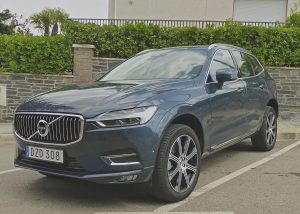
The Volvo XC-60 takes all the assets of the exceptional XC-90 and condenses them into the best SUV on the market — our truck of the year.
Detroit, however, remains the mainstay, and among the major attractions in Detroit is the naming of the North American Car of the Year, Truck of the Year, and Utility of the Year, as voted on by an independent jury of auto media types.
In the two decades I was part of that jury, I tried to influence all who would listen about improving the stature of the car of the year award. The jury did follow my strong suggestion about having a re-vote after naming the finalists, to encourage more coverage among jury members. I did originally think going to a separate category for utility vehicles made sense, but I reversed myself after some serious thought, when I realized that the rapidly expanding surge of SUVs was about to be accompanied by a reduction in legitimate trucks. Read more
Nissan’s Rogue worthy challenger for Toyota’s RAV4
Filed under: Weekly test drives, Autos
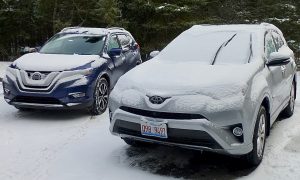
Cover them with an overnight snowfall, and the Nissan Rogue (left) and Toyota RAV4 are more similar — take your pick.
By John Gilbert
Early December in Northern Minnesota, forecast called for a high reaching a surprising 40 degrees. Three days later, it plunged from 39 to a single-digit low of 6 overnight. It was 13 the next day, then the forecast said heavy snowstorm blanketing the Duluth area, but the heavy stuff split, some of it staying north and the rest veering south, along Wisconsin’s South Shore, leaving Duluth and Lake Superior’s North Shore with a mere dusting. Couple days later, we got hit with another couple inches of snow.
The weather forecast can be boring, but not often in and around Duluth. It didn’t bother me, because of my luck of the test-drive draw that particular week. Almost as though they were related by potential, a Toyota RAV4 and a Nissan Rogue couldn’t have proven themselves more impressively. In the process, they provided a better understanding about why U.S. car-buyers are walking right past compact and midsize sedans to get to the SUVs across the showroom. Compact SUVs, often called CUVs for Crossover Utility Vehicles, have taken over.
Two of the mainstays of the compact SUV trend are Toyota’s RAV4, and Nissan’s Rogue. There are dozens of others, such as the Honda CR-V, and a couple of my personal favorites in the Hyundai Tucson and the Mazda CX-5.
But the RAV4 has become the largest-selling vehicle in Toyota livery, which is astounding because of the popularity of the Camry, and the Rogue has much more quietly become Nissan’s largest seller.
The more they advance, the more similar they seem to be, and by sheer coincidence, the week where we had the weird temperature shift from mild to numbing cold to snow, I happened to be able to switch back and forth between a 2017 RAV4 and a 2018 Rogue. Mother Nature didn’t stand a chance.
You are not likely to change a Toyota buyer over to a Nissan, nor will you convince a Nissan buyer to switch allegiance. Same goes for Honda, Mazda and now even Hyundai buyers, as well as several others. But there aren’t a lot of major letdowns in the highly competitive group.
Nissan has updated its Rogue for 2018, adding some very nice creature features to the interior. Plush, red leather seats and full connectivity stuff complete the scenario, and I particularly liked the auto-start switch on the key fob, which worked easier than any others I’ve tested. Push the button from your kitchen, it starts up, and when you climb aboard you just hit the starter switch again and take off. No stop and restart. I also liked the CD player, while most companies are leaving those out. You can even get a very small third-row seat arrangement, which probably will remain folded down flat for stowage throughout their life spans.
Handling is firm and precise, and you always have the feeling that the Rogue is solid and firmly in command of all roadway problems. You can get Rogues for a base price of about $24,000 while the test vehicle, an SL AWD model, starts at over $26,000 and moves upward. The choice of engines is simple. You can get a hybrid model, but the standard 2.5-liter 4-cylinder has 170 horsepower and 175 foot-pounds of torque, feeding its pep through a continuously variable transmission (CVT). Read more
Jeep’s TrackHawk really DASHES through the snow
Filed under: Weekly test drives, Autos
By John Gilbert
Maybe it’s because the folks who build Jeeps are cousins to the FCA Group’s Dodge Boys, who keep giving new life to aging — vintage? — sedans, but the engineering crossover happened quicker and more efficiently than crossovers themselves. That’s why we now have something called the Jeep Grand Cherokee Trackhawk — which might be described as the perfect vehicle for somebody who wants to go off-roading extremely fast.
After my first, somewhat breathtaking, exposure to the 707-horsepower Trackhawk, which came on a road-racing track, my biggest question is how would such an enormously overpowered and highly-engineered vehicle work in the real world.
Now, my real-world is based on the North Shore of Lake Superior, up the road a piece from the westernmost point of the big lake, called Duluth. In the Duluth area, we have what you call “winter.” During winter, there is a lot of cold weather, and a lot of snow and ice. Having less power and more traction is usually an asset during the winter months. Finally, I got the chance to adequately test a Grand Cherokee Trackhawk just before Christmastime, and Mother Nature was kind enough to oblige with a nasty little snowstorm, which covered the North Shore with about 6 inches of snow, and then a temperature plunge that want down near zero, just to make it crusty.
The timing was good enough that I could ask my wife, Joan, and sons Jack and Jeff, for a special Christmas gift — a Trackhawk of my own. They rejected my suggestion out of hand. They offered some flimsy excuse like it wouldn’t fit under the Christmas tree, but I knew their reluctance was only because they couldn’t gather up the $90,880 on the sticker for the test vehicle.
Given a choice, every automaker in the world would like to provide what they call complete coverage of whatever segment they are in. Jeep, undoubtedly the most-recognized name in U.S. automobiles, is not immune from that desire, even though Jeep’s segment is comparatively small and well focused.
I mean, the original Jeep was built to go anywhere, particularly over rugged terrain while transporting soldiers or military officials through fields, mountains, streams and every other imaginable surface. So Jeep has excelled at building its Wrangler to do just that, and a surprisingly large gang of hobby off-roaders is forever grateful. Jeep then stretched upward, to build larger vehicles before the term “SUV” came along, and the Grand Cherokee has been a stalwart Sport Utility Vehicle since its inception.
From there, every direction came into play, and Jeep built the Cherokee, which was smaller, or less-grand, than the Grand Cherokee; then various diversionary vehicles, including the Wagoneer, Patriot, Compass, Renegade, and whatever. Finally, Jeep has streamlined itself to fofer the Grand Cherokee, Cherokee, Compass, Renegade, and Wrangler. That must have been where the Jeep engineers realized that their counterparts who build Dodge Chargers and Dodge Challengers, and even a competitive SUV called the Durango, were having a lot more fun than merely bouncing over off-road terrain. Read more
Quadrifoglio gives Giulia 505-horsepower kick
Filed under: Weekly test drives, Autos
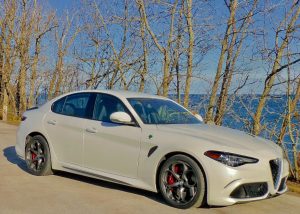
Looking identical to its turbo-4 brother, the Alfa Romeo Giulia Quadrifoglio has a Formula 1-inspired twin-turbo V6.
By John Gilbert
As a responsible automotive journalist, it’s been my long-standing motto to avoid losing it and gushing too favorably about any car. And, in looking back a month or two, I must take full responsibility for losing it when I reviewed the Alfa Romeo Giulia TI, with its great balance and handling and its potent 2.0-liter 4-cylinder engine.
Bear with me, because it’s that time again.
After just enough time between driving the bright red Giulia TI and the hard-core onset of winter, I got the chance to spend a week with a flistening Trofeo White Tri-coat Alfa Romeo Giulia Quadrifoglio.
If the 2.0 Giulia is the perfect sedan, then the Quadrifoglio is its muscular big brother. Reports are that parent Fiat instructed subsidiary Ferrari to assign its best Formula 1 engineers to build the hot little four, and they did well. Those engineers must have enjoyed coming to work every day to work on the Quadrifoglio, however, because they overachieved.
They were told to build engines that could make the new Giulia something truly special, and they came up with a 2.9-liter V6 — not very big, by V6 standards — and they forced power into it with twin turbochargers that resulted in 505 horsepower and 443 foot-pounds of torque. Driven through an 8-speed automatic transmission, with those giant paddles affixed to either side of the steering column, you need to be especially alert behind the wheel, because the Quadrifoglio could get away from you.
The four had a remarkable 276 horses and 295 foot-pounds of torque, and while that is far more than adequate, numbers like 505 and 443 allow the Quadrifoglio to rise to a whole ‘nother universe in scorching car performance. Read more


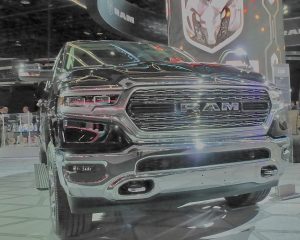
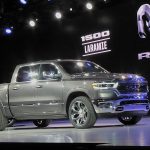
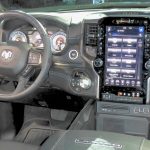
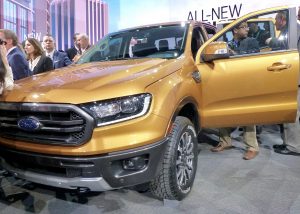
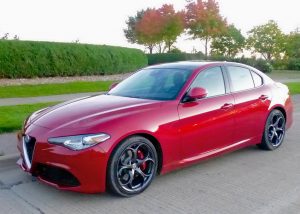
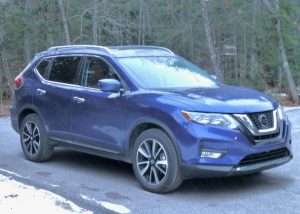
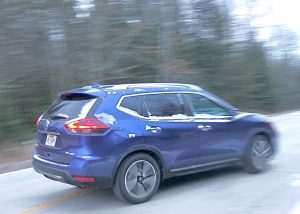
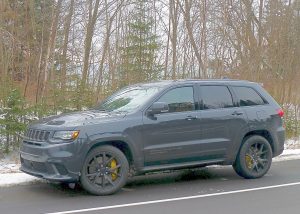
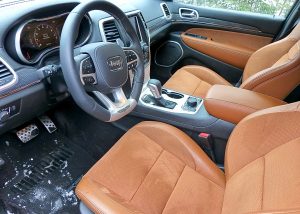
 John Gilbert is a lifetime Minnesotan and career journalist, specializing in cars and sports during and since spending 30 years at the Minneapolis Tribune, now the Star Tribune. More recently, he has continued translating the high-tech world of autos and sharing his passionate insights as a freelance writer/photographer/broadcaster. A member of the prestigious North American Car and Truck of the Year jury since 1993. John can be heard Monday-Friday from 9-11am on 610 KDAL(www.kdal610.com) on the "John Gilbert Show," and writes a column in the Duluth Reader.
John Gilbert is a lifetime Minnesotan and career journalist, specializing in cars and sports during and since spending 30 years at the Minneapolis Tribune, now the Star Tribune. More recently, he has continued translating the high-tech world of autos and sharing his passionate insights as a freelance writer/photographer/broadcaster. A member of the prestigious North American Car and Truck of the Year jury since 1993. John can be heard Monday-Friday from 9-11am on 610 KDAL(www.kdal610.com) on the "John Gilbert Show," and writes a column in the Duluth Reader.